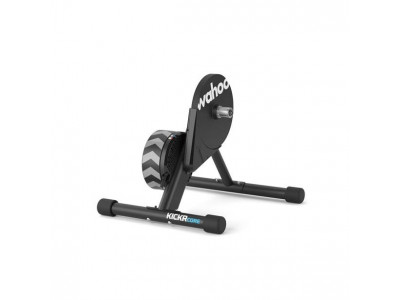Cycle trainers differ from each other in the way they attach the bike, the way they simulate resistance, and connectivity. A frequently monitored parameter is noise, as they are also used in apartments. The quietest are trainers that attach bicycles after removing the rear wheel. On the other hand, the noisier ones are those that create resistance by rubbing the roller against the rear tire of the wheel and so-called rollers. Smart trainers allow you to connect the trainer to a PC, tablet, or phone. The load is controlled automatically and is used when using popular applications such as Zwift. At the opposite end are those where the resistance is adjusted manually with a lever.
How to set up an exercise bike?
Setting up your exercise bike may vary slightly depending on the specific model you have, but here are general steps to get you started:
- Choose a suitable location: Find a flat, stable surface with enough space for the bike and trainer. Consider using a mat under the trainer to protect your floor and reduce noise.
- Assemble the exercise bike: If the trainer comes disassembled, follow the manufacturer's instructions to assemble the frame and all other components.
- Adjust the trainer to fit your bike: Most trainers use adapters to fit different bike frames. Place your bike on the trainer and make sure it is securely attached. Check that the rear wheel is properly aligned and centred, and the axle is properly tightened.
- Connect all other features: If your trainer has sensors or connectivity options, such as Bluetooth or ANT+, follow the instructions to connect them to your cycling computer or training apps.
- Warm up and test the trainer: Before starting your workout, warm up by pedalling gently for a few minutes. Use this time to make sure the bike is stable, the trainer is working properly, and there are no unusual noises or vibrations.
How to choose a trainer?
Choosing a trainer depends on a variety of factors, such as fitness goals, budget, available space, and personal preferences. Here are a few steps to help you make your decision:
- Determine your goals: Consider why you want a trainer. Is it for indoor training during inclement weather, keeping fit during the off-season, or for specific training purposes like interval or strength training? Knowing your goals will help you decide which type of exercise bike is best for you.
- Types of trainers: There are 4 main types available on the market today. The classic solution with braking on the rear wheel casing, the trainer with its own cassette, the rollers, and the smart exercise bikes.
- Consider noise and vibration: If noise and vibration are a concern for you, you may want to consider trainers that are specifically designed to be quiet and stable.
- Stability and durability: Look for a trainer that offers stability and can handle your body weight and intensity level during your workout. Check the weight limit and build quality of the trainer to make sure it is durable and can withstand regular use.
- Compatibility: Make sure the trainer is compatible with your bike. Most trainers are designed to fit a wide range of bikes, but it's always a good idea to double-check to see if additional adapters or modifications are needed.
- Additional features: Consider any additional features you might want, such as a built-in power meter, connectivity to virtual training platforms, or the ability to simulate hills or change resistance. These features can enhance your training experience, but they may come at a higher cost.
- Budget: Set a budget based on your needs and preferences. Indoor cycling trainers can range from affordable entry-level models to high-end, feature-rich options. It's important to find a balance between your budget and the features you want.
- Read reviews and compare: Before making a final decision, read reviews from other users to get an idea of their experiences with different trainers. Compare the features, specifications, and prices of different models to find the one that suits you best.

